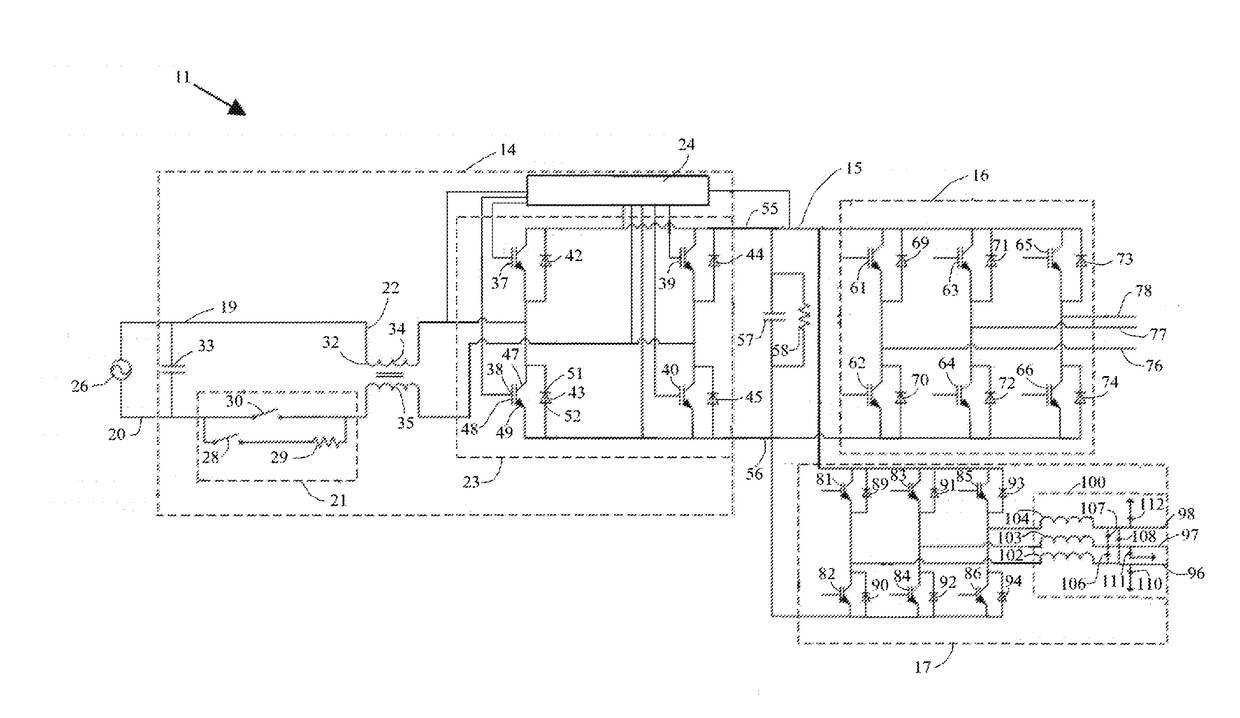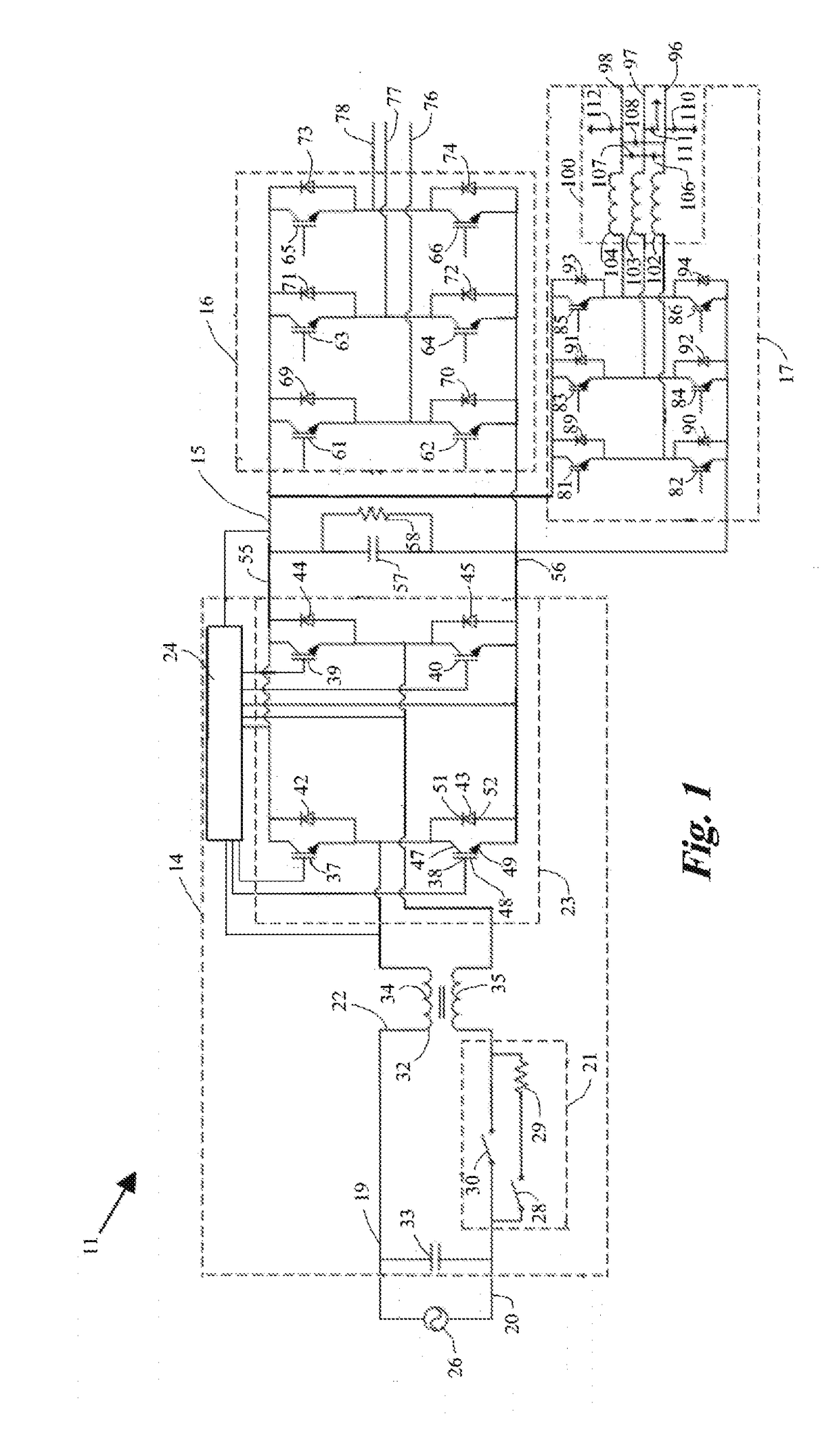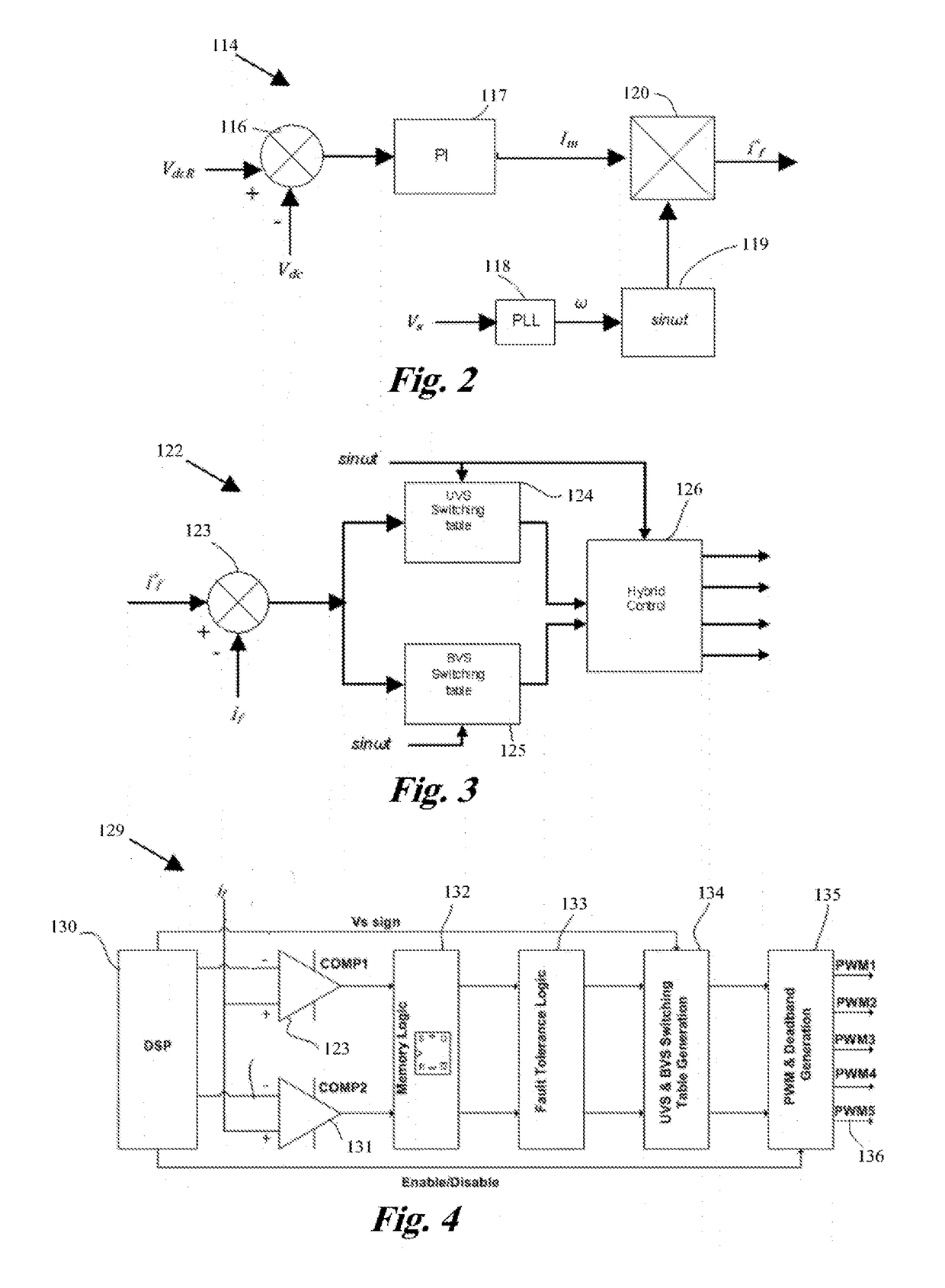Regenerative variable frequency drive with auxiliary power supply
a variable frequency drive and auxiliary power supply technology, applied in the field of variable frequency drives, can solve the problems of complex installation and expense of dynamic braking resistors, the inability of three-phase active converters to convert the power from a single-phase ac source to charge the dc bus, and the availability of single-phase ac power in most residential and rural areas
- Summary
- Abstract
- Description
- Claims
- Application Information
AI Technical Summary
Benefits of technology
Problems solved by technology
Method used
Image
Examples
Embodiment Construction
[0024]Referring to FIG. 1, a regenerative variable frequency drive 11, embodying the features of the present invention, includes an active converter 14, a DC bus 15 connect to the converter 14, and first and second inverters 16 and 17 connected to the DC bus 15. The converter 14 includes first and second input lines 19 and 20, a precharging circuit 21, an input filter 22, an active rectifier 23 and a controller 24. The first and second input lines 19 and 20 connect to a single phase AC source 26. Generally, the source 26 will be a utility power grid. In the United States, the source 26 will typically provide power at 240V at 60 Hz.
[0025]The precharging circuit 21 connects along the second input line 20 and includes a first switch 28 connected in series to a resistor 29, and a second switch 30 connected in parallel to the first switch 28 and the resistor 30. During startup of the drive 11, the first switch 28 is closed and the second switch 30 is open so that current passes through r...
PUM
 Login to View More
Login to View More Abstract
Description
Claims
Application Information
 Login to View More
Login to View More - R&D
- Intellectual Property
- Life Sciences
- Materials
- Tech Scout
- Unparalleled Data Quality
- Higher Quality Content
- 60% Fewer Hallucinations
Browse by: Latest US Patents, China's latest patents, Technical Efficacy Thesaurus, Application Domain, Technology Topic, Popular Technical Reports.
© 2025 PatSnap. All rights reserved.Legal|Privacy policy|Modern Slavery Act Transparency Statement|Sitemap|About US| Contact US: help@patsnap.com



